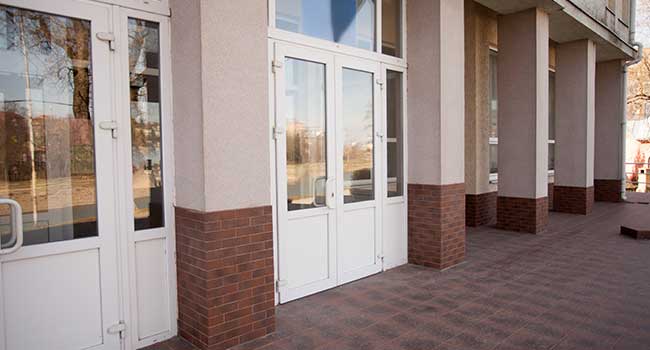
Colorado Springs District to Use $650,000 State Grant to Increase Elementary School Security
District 11 in Colorado Springs plans to use almost $650,000 in state grants to increase security at three of its elementary schools.
- By Jessica Davis
- May 03, 2019
District 11 in Colorado Springs plans to use $647,014 in state grants to increase security at three of its elementary schools. The district was awarded the funding through the School Security Disbursement program, a Colorado state grant that was awarded to 95 schools and districts in the state.
“When I found out we had won some money, my heart just started to race,” said Hannah DeFord, the project manager for D-11’s facilities department. “I was so excited because we wouldn’t be able to do any of these projects without this grant.”
According to DeFord, District 11 plans to use the funding to add security vestibules at Grant, Howbert and Monroe elementary schools. Currently, visitors must be granted access and buzzed through the front doors of these campuses, but the vestibules will provide a second set of doors and a space where visitors will be required to check in before they can enter the school itself.
“So the elementary schools that we specifically applied for, once you’re buzzed in the main entrance, there can be quite a route to get to the office in order to check in,” DeFord said. “Some of them you actually have to go down the hallway and around the corner and down another hallway, which isn’t necessarily safe because once they’re in, the office personnel do not have the visual connection to the front door to see if these people are actually coming in to check into the building.”
DeFord said that while security is a top priority on campuses today, it wasn’t thought of in the same way in the 1950s and 60s, when these schools were built.
“Security and visitor security during that time was not even a consideration, much less a priority,” she said. “Now, with changing times, that is one of our top priorities is actually keeping the children safe. And it’s difficult to retrofit buildings to have security vestibules and have other security measures when that was not in the original design intent of the building.”
District 11 had hoped to implement new security features at more than a dozen schools, but was only awarded grant funding for work at the three elementary schools, DeFord said.
“There were 13 projects that we had asked for, and it was $2.7 million worth of funding that we had requested,” she said. “Even though we didn’t get everything we asked for, even just a little bit of help is very wonderful.”
District 11 wouldn’t have been able to add any of the security measures if not for the grant money, according to DeFord.
“Our priorities are safety and security for the buildings, but adding security vestibules to these sites is above and beyond what we're able to do. So this is definitely a blessing for the district,” she said. “The intention is to address all of our high priority schools, but it’s going to have to be one at a time as the funding becomes available.”
District 11 said it hopes to start construction next summer and have the new security features implemented by the time school starts in fall 2020.
About the Author
Jessica Davis is the Associate Content Editor for 1105 Media.